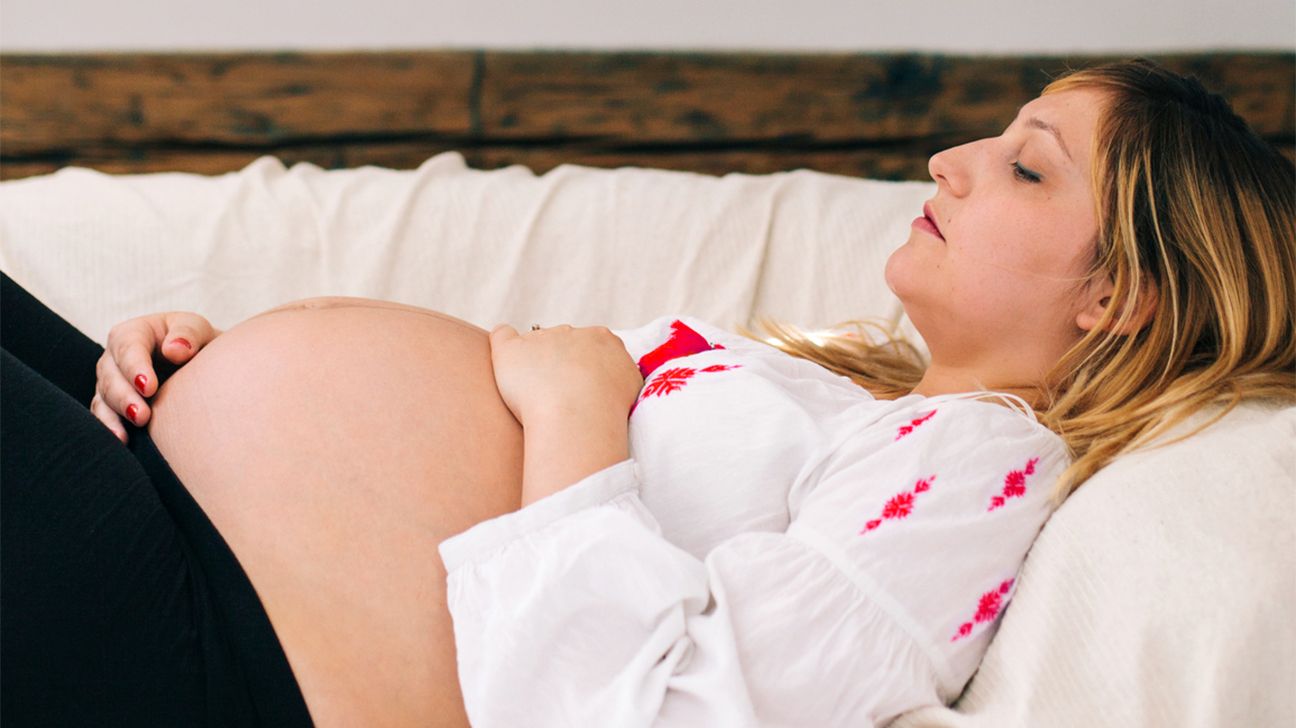Braxton-Hicks contractions are the tricksters of the pregnancy world, fooling women into thinking they’re in labor when it’s just a false alarm.
But what does this actually mean and how can you tell the difference between Braxton-Hicks contractions and real labor contractions? Let’s break it down.
Think of Braxton-Hicks contractions as the rehearsal before the big show, preparing you to deliver that baby in an Oscar-worthy labor of love.
These signs of false labor can start as early as 6 weeks into gestation, but usually go unnoticed until the third trimester. They tend to pop up sporadically in the afternoon and evening, or following a physically taxing day.
Braxton-Hicks contractions tend to increase as your due date approaches and usually aren’t painful, but every woman experiences them differently. One woman’s slight tightening in the abdomen is another’s Rachel Green moment (#KWEEN).
Like real contractions, Braxton-Hicks contractions can thin the opening of the uterus (aka the cervix). However, unlike real contractions, they won’t lead to labor.
You may be experiencing Braxton-Hicks contractions if…
- they stop when you shift positions or go pee
- they don’t increase in intensity or frequency
- they come and go without following a pattern
Labor contractions start when your body releases oxytocin, a hormone that triggers your uterus to start contracting, signaling that it’s time for your baby to make its grand entrance into the world.
Real contractions tighten the uterus to push the baby into the birth canal, while also thinning the cervix so it can expand and let the baby through.
This sensation is often felt in waves, with the pain starting low in the abdomen as your uterine muscles tighten, rising up as muscles continue to contract, and finally fading as the muscles relax.
Labor contractions start at roughly the 40th week of pregnancy. If they begin before the 37th week, this can be a sign of premature labor.
You may also be experiencing labor if…
- your “water breaks”
- you “expelliarmus” a pinkish/bloody mucus clump when you go to the bathroom, known as “bloody show”
- the baby feels like it’s dropped lower in your belly (*plop*)
How do you know if you’re experiencing real contractions or a false alarm? This handy chart can help:
| Braxton Hicks contractions | Real contractions | |
| How they feel | Like a squeezing or tightness that’s generally not painful | Like cramps or a tightening that starts in the back and moves to the front in waves, increasing in pain and intensity |
| When they start | Generally the 3rd trimester, but can happen in the 2nd trimester | After week 37 of your pregnancy (if they start earlier, it could be a sign of preterm labor) |
| How long they last | Less than 30 seconds, up to 2 minutes | 30–70 seconds |
| How often they happen | Here and there, following an irregular pattern | In steady intervals that gradually get closer together |
| Where they happen in your body | The front of the abdomen | The abdomen and lower back, sometimes spreading to your thighs and sides |
If your contractions lack consistency, you’re likely experiencing Braxton-Hicks. If they’re causing pain or discomfort, try shifting positions or going to the bathroom.
If they begin to show signs of regularity then it’s time to pay attention. If you suspect you’re experiencing real contractions, it’s a good idea to time them for about an hour to monitor how much time is between each contraction.
Once you notice that they’re becoming more intense or closer together –– it’s showtime! Congratulations, you’re likely going into labor!
When the time between contractions is about 5 to 6 minutes apart, it’s time to hustle to the hospital or your planned place to deliver.
If you believe you’ve gone into real labor, it’s best to call the doctor or whichever care specialist you’ve been working with -– because, honey, you’re (likely) having a baby!
You’ll also want to contact your care provider if your water has broken or your contractions are crazy painful. And if it’s before the 37th week of pregnancy, contact your healthcare provider pronto as this could be a sign of premature labor.
If you’re not sure what type of contractions you’re experiencing, it never hurts to make a quick call or visit your preferred labor specialist.
Braxton-Hicks contractions are a sneaky form of “false labor” as your body prepares for the real thing. They often happen in the third trimester, don’t follow a pattern or rhythm, and are usually (but not always!) not painful.
Real contractions are much more structured, being felt in consistent waves of pain that are evenly timed apart. They’re a sign that your body has gone into labor. Other signs of labor include your water breaking or the sudden appearance of a “bloody show.”
Once your contractions are roughly 5 to 6 minutes apart, it’s time to contact your healthcare provider. It’s also a good idea to contact them if you aren’t sure what type of contractions you’re experiencing or if anything feels off.

